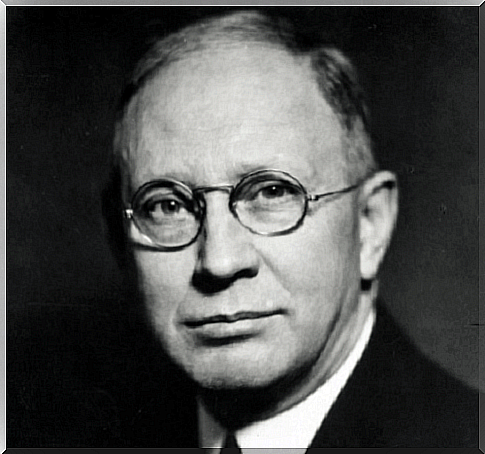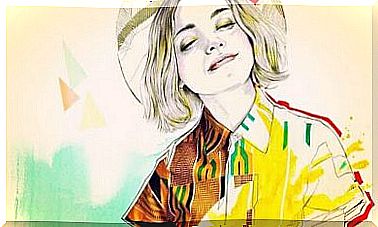Clark L. Hull And Deductive Behaviorism Theory

Clark L. Hull (1884-1952) proposed a new way of understanding behavior. Hull wanted to establish basic principles in behavioral science to explain both the behavior of different animal species as well as the individual and social behavior. His theory is known as deductive behaviorism theory.
Hull’s theory was the most detailed and complex of all the great learning theories of the 20th century. For Hull, the habit concept was the most basic. He believed that exercise strengthened habits.
Hull described habits as stimulus-response connections based on rewards. According to Hull, it is answers and not perceptions or expectations that shape habits. The process is gradual and the reward is a fundamental component.
Hull: deductive behaviorism theory
Clark L. Hull proposed a new way of understanding behaviorism based on the logical positivism that existed during his time.
Like other leading theorists, Hull believed that behavior can be explained by environment and reinforcement. The reduction of impulses acts as a reinforcement for behavior.
This reinforcement increases the probability that the same behavior will occur again when the same needs arise in the future. In order to survive in such an environment, a creature must therefore behave in a way that meets these survival needs. In a stimulus-response relationship, where stimuli and response are followed by a reduction in need, the probability that the same stimuli will “produce” the same response in the future will increase.

Hull wanted to establish the basic principles of a behaviorism theory to explain the behavior of animals, and also the individual and social behavior. Deductive behaviorism theory proposes habit as a central concept. The strength of the habit depends on whether the sequence of stimuli and response is followed by an amplification. The magnitude of the gain, in turn, depends on the reduction of the impulses associated with a biological need.
Hull presented his learning theories for the first time in Mathematico-Deductive Theory of Rote Learning (1940) , which was a collaboration with several colleagues where he explains his findings in both mathematical and verbal form.
Hull developed these ideas in Principles of Behavior (1943) , where he suggests that the stimulus-response connection depends on both the type and amount of reinforcement.
Hull’s learning theory
Hull was one of the first theorists to create a theory designed to explain behavior. This learning theory, developed by Hull in 1943, is known as the operational reduction theory. Hull based his theory on the concept of homeostasis – the idea that the body actively works to maintain a state of balance.
A driving force, such as thirst, hunger or cold, creates an unpleasant condition. To reduce this condition, humans and animals try to meet these biological needs (drinking, eating, finding shelter). Hull therefore suggested that humans and animals repeat all behaviors that reduce these impulses.
Hull based his theory on the idea that people learn secondary driving forces (as opposed to primary driving forces, which are biological needs such as the need to socialize, thirst and hunger) through learning. These driving forces indirectly satisfy the primary driving forces, such as the need for money, because it pays for food and shelter.
These secondary driving craters occur when more than one need is met. The goal is to correct the distribution of homeostasis which causes discomfort. A behavior will only be learned if, and only if, a person meets a primary need (driving force).

As a mathematical formula
Hull also developed a way of expressing his learning theory mathematically:
sEr = V x D x K x J x sHr – sIr – Ir – sOr – sLr
In this formula:
- sEr: The probability that an organism will produce a response (s) or a stimulus (s).
- sHr: Habit strength, established by conditioning since before.
- D: Driving force, determined by biological deprivation.
- K: Incentive motivation, or the size of the goal.
- J: The delay before the organism can seek reinforcement.
- Ir: Reactive inhibition, or exhaustion.
- sIr: Conditioned inhibition, caused by previous lack of reinforcement.
- sLr: Reaction threshold, the minimum amount of reinforcement that will produce learning.
- sOr: Random error.
According to Hull, the removal and reduction of impulses is the most important thing in theory. Since these impulses can hinder productivity, Hull’s theory implies that an increase in potential productivity can be developed in a work environment. By satisfying all the needs, you can improve your work performance and thereby achieve greater success.
Conclusions regarding deductive behaviorism theory
Critics believed that such a deductive behaviorism theory was too complex, or that it did not explain human motivation, and that it could not be generalized.
One of the biggest problems with the theory is that it does not address how secondary reinforcements reduce driving forces. Unlike the primary driving forces, such as hunger and thirst, the secondary driving forces do nothing directly to reduce physiological and biological needs. Another important critique of this theory is that it does not explain why people have behaviors that do not reduce driving forces.
In any case, this theory has influenced other theories and explanations. Many of the motivation theories that emerged during the 50s and 60s were based on Hull’s original theory or focused on finding alternatives to the theory. A good example of this is Abraham Maslow’s famous hierarchy of needs, which emerged as an alternative to Hull’s approach.









